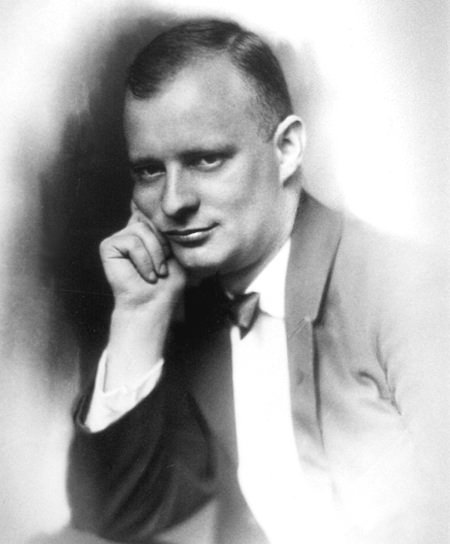
The weather was pretty dismal in most of England in January 1936. A depression over Spain had rapidly moved further north, bringing severe snowstorms and widespread gales to England, accompanied by driving rain and sleet. Enormous waves lashed the South Coast. It was not a good time for a visit.
It couldn’t have been a great deal of fun crossing the English Channel either. But German composer and viola virtuoso Paul Hindemith had little choice. He had been booked to play the British premier of his viola concerto with the BBC Symphony Orchestra at the Queen’s Hall on 22 January with Adrian Boult conducting. But it was not to be. King George V of the United Kingdom, the British Dominions and Emperor of India, died just before midnight on 20 January.
In the inevitable period of mourning that followed, the concert had to be cancelled because the programme was inappropriate but Adrian Boult and the BBC music producer Edward Clark still wanted Hindemith to be involved with the music that was broadcast in its place. It was eventually decided that Hindemith should be commissioned to write something for the concert to be broadcast the following evening.
The BBC found him a spare office and during the course of the next day Hindemith composed Trauermusik (Music of Mourning) in homage to the late king. It was written for viola and string orchestra and the instrumental parts were hastily produced by a team of copyists. With the ink barely dry on the pages, the work was performed that evening in a live broadcast from a BBC radio studio with Adrian Boult conducting and the composer as soloist. The Swiss philanthropist Werner Reinhart later remarked that he knew of no one else who could write a work in half a day and then give the first performance only hours later.
Paul Hindemith (powl HINN-deh-mitt) was an immensely prolific composer who had the ability to work quickly. During the 1930s, he was a big name in the musical world and during this lifetime wrote a dozen operas, several concertos, symphonic works and a huge amount of chamber and instrumental music. He had been in the international spotlight since the late 1920s but remained a rather controversial figure, falling in and out of favour with the Nazi hierarchy. For a time, his music was completely banned in Germany.
Trauermusik consists of four brief movements conceived in a kind of neo-classical style that gazes back to earlier, less troubled times. You might even hear echoes of Vaughan Williams. It’s a tonal piece far removed from some Hindemith’s earlier works such as the spiky and assertive Kammermusik suites of the 1920s. This is reflective, thoughtful music and at the start of the last movement (06:36), the first violins quietly play the Bach chorale Here I stand before thy throne, a popular hymn in Germany. At the time of writing, Hindemith was unaware that the tune was also known to almost everyone in England as a hymn entitled “The Old Hundredth” beginning with the words All people that on Earth do dwell.
I’ve already mentioned Hindemith’s Kammermusik and in some ways it’s much more typical of the composer’s early style. It’s his birthday on 16th November anyway so it’s only fair that he gets two cracks of the whip. In any case, he remains one of the twentieth century’s most neglected composers.
During the 1920s, Hindemith wrote eight suites for various groups of instruments which he entitled Kammermusic. Despite the title, some of the suites are not chamber music in the accepted sense because they’re written for comparatively large ensembles. The sparkling first suite is neo-classical in a Stravinskian kind of way and unusually includes an accordion in the ensemble.
The writer and composer Henry Doktorski wrote that the work is “a cheerful, irreverent suite which manifests clear reference to Hindemith’s early experience performing in dance bands and musical comedy orchestras in and around Frankfurt. Strong rhythms, sparkling instrumentation, and incorrigible impudence are the work’s distinguishing features. Its first three movements are a boisterously dissonant prelude, a frivolous march, and a pastoral “quartet” for the three woodwind instruments and a single note on a glockenspiel.
The Finale unleashes the whole ensemble in an obstreperous display of anarchic humor… and the end is a manic stretto worthy of any great comedy of the silent screen.” I couldn’t have put it better myself. Oh, and just in case you’re wondering, ESMRS stands for Escuela Superior de Música Reina Sofía. I shall allow you the pleasure of translating that yourself. I can’t be expected to do everything around here, you know.
To watch these YouTube videos, either use your Smartphone to read the QR codes or go to this article online, click on the “live” links and go direct to the videos. If you have a laptop, sound quality can be improved significantly by using headphones or external speakers.
 |
 |
 |





